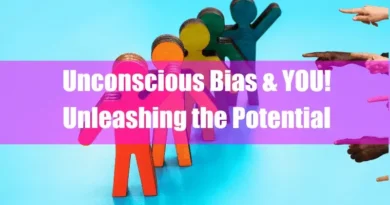Who Gets Anxiety Disorder Depression And How Common Are They
Anxiety disorders and depression are common mental health conditions that can affect anyone, regardless of age, gender, race, or socioeconomic status. While anyone can develop these conditions, certain factors such as genetics, family history, personal experiences, and underlying medical conditions may increase a person’s risk.
According to the World Health Organization (WHO), anxiety disorders are the most prevalent mental health condition globally, affecting an estimated 264 million people worldwide, with women being twice as likely to experience it as men. Anxiety disorders, for instance, are more prevalent in women than men, with 23.4% of women and 14.3% of men in the United States experiencing one in their lifetime.
Depression is the second most common mental disorder, affecting an estimated 280 million people worldwide. Both anxiety disorders and depression can significantly impact a person’s quality of life, affecting their relationships, work, and overall well-being. However, with effective treatment, including therapy, medication, and lifestyle changes, most people with anxiety disorders and depression can manage their symptoms and lead fulfilling lives.
Takeaways
| Category | Details |
|---|---|
| What they are | Anxiety and depression are two common mental health conditions. Anxiety is characterized by excessive worry and fear, while depression is marked by persistent sadness and hopelessness. |
| Symptoms | Anxiety can cause physical symptoms like muscle tension, headaches, and fatigue. Depression can lead to changes in appetite, sleep disturbances, and feelings of worthlessness and guilt. |
| Causes | The exact causes are unknown, but contributing factors include genetics, brain chemistry, life events, and chronic illness. |
| Who gets it | Anxiety and depression can affect anyone, though risk factors include age, gender, ethnicity, and socioeconomic status. |
| Impact | These conditions can significantly impact mental health, physical health, relationships, work, and society. |
| Treatment | Treatment options include therapy, medication, and self-care practices. |
What is Anxiety Disorder?
Anxiety is a sensation of uneasiness, anxiety, or dread over an unclear or possibly dangerous situation. It is a natural response to stress that can be helpful in some cases, such as helping us stay alert and focused in the face of danger. However, excessive or persistent anxiety can interfere with daily life and lead to physical symptoms such as muscle tension, headaches, and digestive problems. Anxiety disorders are mental illnesses characterized by intense, persistent, and excessive anxiety and fear, often in response to situations that do not pose a threat. Common anxiety disorders include generalized anxiety disorder, social anxiety disorder, panic disorder, and particular phobias.
What is Depression?
Depression disorder, or clinical depression or major depressive disorder, is a mental health condition characterized by persistent sadness, hopelessness, and a lack of interest or enjoyment in once-pleasurable activities. Physical signs of depression might also occur, such as fatigue, changes in appetite and sleep patterns, and difficulty concentrating.
Depression may afflict everyone, regardless of gender, age, or socioeconomic status. It is a common condition, with an estimated 264 million people worldwide experiencing depression. Various factors, including genetics, brain chemistry, life events, and medical conditions, can cause depression.
Symptoms of Anxiety and Depression
Anxiety and depression are separate but often co-occurring mental health conditions that can significantly impact a person’s daily life. Here are some common symptoms of each:
A. Symptoms of Anxiety
- Excessive worry or fear about everyday situations
- Feeling restless or on edge
- Muscle tension and difficulty relaxing
- Difficulty concentrating or focusing
- Avoiding certain situations or activities out of fear
- Rapid heartbeat, sweating, and trembling
- Sleep difficulties such as nightmares or insomnia
- Irritability or quickly becoming agitated
- Panic attacks can include sudden and intense fear and physical symptoms such as shortness of breath, chest pain, and dizziness.
B. Symptoms of Depression:
- Long-lasting dejection or despair
- Loss of delight or interest in once-fun activities
- Significant changes in appetite and weight
- Fatigue or loss of energy
- Difficulty concentrating or making decisions
- Feelings of worthlessness or guilt
- Sleep disturbances such as insomnia or oversleeping
- Physical symptoms such as stomachaches, back pain, or headaches
- Suicidal thoughts or behaviors.
Causes of Anxiety and Depression
Anxiety and depression are two common mental health conditions that can significantly impact an individual’s well-being, relationships, and quality of life. While the exact causes of anxiety and depression are not fully understood, Researchers have identified several factors that contribute to these conditions. Some of the most common causes of anxiety and depression include:
A. Stomach Problems
Stomach problems are common ailments that affect people of all ages. These problems can cause significant discomfort and distress, leading to anxiety and depression. This article explores the relationship between stomach problems and their association with anxiety disorders and depression.
1. Overview of Stomach Problems
Stomach problems include a range of gastrointestinal (GI) disorders, such as acid reflux, irritable bowel syndrome (IBS), ulcers, gastritis, and others. These conditions can cause symptoms such as pain, bloating, diarrhea, constipation, and nausea.
2. The Gut-Brain Connection
The gut-brain connection is the bidirectional communication between the central nervous system (CNS) and the gastrointestinal (GI) tract. Studies have shown that the gut-brain axis plays a significant role in regulating mood and behavior.
3. Stomach Problems and Anxiety Disorders
Anxiety disorders are a set of mental illness disorders characterized by excessive fear and worry. Research has suggested that people with stomach problems are more likely to develop anxiety disorders than those without. The chronic discomfort and unpredictable nature of stomach problems can cause people to feel anxious and worried, leading to an increased risk of anxiety disorders.
4. Stomach Problems and Depression
Millions of people all around the globe suffer from depression, which is a mood illness. Studies have shown that people with stomach problems are more likely to develop depression than those without. The constant discomfort and distress caused by stomach problems can lead to a sense of hopelessness and helplessness, leading to an increased risk of depression.
B. Genetics
There is a hereditary component to anxiety and depression, according to research. Individuals with a family history of these conditions may be more susceptible to developing them.
C. Brain chemistry
Anxiety and depression may occur due to imbalances in specific brain chemicals, including serotonin and dopamine.
D. Environmental factors
Traumatic or stressful life events, such as losing a loved one, financial difficulties, or relationship problems, can trigger anxiety and depression.
E. Chronic illness
Individuals with chronic medical conditions, such as cancer, diabetes, or heart disease, may be more likely to experience anxiety and depression due to the physical and emotional toll of the illness.
F. Substance abuse
It can lead to chemical imbalances in the brain, increasing the risk of developing anxiety and depression.
G. Personality traits
Certain personality traits, such as low self-esteem or a tendency towards negative thinking, can increase the risk of developing anxiety and depression.
H. Lack of social support
Individuals who lack a strong support system or experience social isolation may be more susceptible to anxiety and depression.
I. Religious Factor
Sin, or actions against one’s moral or ethical beliefs, can lead to guilt, shame, and low self-worth, developing or exacerbating depression and anxiety.
Who Gets Anxiety Disorder, Depression
Key factors that contribute to the development of anxiety and depression disorders:
A. Age
One of the primary dangers for developing anxiety and depression disorders is age. These conditions can occur at any age but are more common in older adults. Older adults may experience significant life changes, such as retirement, loss of loved ones, and declining health, that can contribute to feelings of isolation, hopelessness, and anxiety. Studies show that older adults are also more likely to experience physical health conditions such as chronic pain, which can increase their risk of depression.
However, younger individuals are also at risk of developing anxiety and depression disorders. Adolescents and young adults face unique stressors, such as academic, social media, and peer pressure, which can contribute to developing these conditions. Moreover, hormonal changes during adolescence and young adulthood can also increase a person’s vulnerability to anxiety and depression disorders.
B. Gender
Gender is another important factor influencing the development of anxiety and depression disorders. These illnesses are more likely to affect women than males, and the gender gap is most pronounced during reproductive years. Studies suggest that hormonal changes during the menstrual cycle, pregnancy, and menopause may contribute to the increased prevalence of anxiety and depression disorders in women. Women are also more likely to experience domestic violence and sexual abuse, which are significant risk factors for these conditions.
Conversely, men may be less likely to seek help for their mental health problems due to social and cultural expectations that require them to be strong, stoic, and self-sufficient. As a result, men may experience anxiety and depression disorders in silence, which can exacerbate their symptoms and lead to more severe consequences.
C. Ethnicity
Ethnicity is another factor that influences the development of anxiety and depression disorders. Studies suggest that individuals from certain ethnic groups may be at higher risk of these conditions. For example, research shows that Black, Indigenous, and People of Color (BIPOC) individuals experience higher rates of depression and anxiety disorders than White individuals. Discrimination, racism, and systemic inequalities that BIPOC individuals experience to contribute to these disparities.
Moreover, BIPOC individuals may face unique cultural and social barriers to accessing mental health care. Language barriers, cultural stigma, and lack of representation in the mental health field may discourage BIPOC individuals from seeking help for their mental health problems.
D. Socioeconomic status
Socioeconomic status (SES) is also a crucial factor that influences the development of anxiety and depression disorders. Low SES is associated with a higher risk of these conditions, and the association is bidirectional. Poverty, unemployment, and financial insecurity are significant sources of stress that can contribute to developing anxiety and depression disorders. Moreover, individuals from low SES backgrounds may face limited access to mental health care due to financial constraints, lack of insurance coverage, and geographic barriers.
Furthermore, individuals from low SES backgrounds may experience chronic stress due to social and economic inequalities, which can lead to the development of anxiety and depression disorders. The focus of poverty and financial insecurity can also impact a person’s ability to make healthy lifestyle choices, such as eating a healthy diet and exercising, which can further exacerbate their mental health problems.
Impact of Anxiety Disorders and Depression
They can profoundly impact individuals, their loved ones, and society. Here are some of the ways anxiety and depression disorders can affect different areas of life:
A. Mental health
- Depression and anxiety may greatly influence an individual’s mental health, leading to feelings of sadness, hopelessness, and despair.
- They can cause individuals to experience insomnia, fatigue, and lack of motivation, further exacerbating the disorder.
- In severe cases, anxiety and depression can lead to suicidal thoughts or behaviors.
B. Physical Health
- Anxiety and depression can also hurt an individual’s physical health.
- They can cause symptoms such as headaches, muscle tension, and digestive issues.
- In some cases, anxiety and depression can lead to chronic health conditions, such as heart disease or autoimmune disorders.
C. Relationships
- Depression and anxiety may significantly influence an individual’s relationships with others.
- They can cause individuals to withdraw from social activities, leading to feelings of isolation and loneliness.
- They can also cause individuals to become more irritable and less patient, which can strain relationships with friends and family members.
D. Work and Productivity
- Anxiety and depression can also significantly impact an individual’s work and productivity.
- They can lead to absenteeism, presenteeism (being physically present at work but not fully engaged), and reduced productivity.
- In severe cases, anxiety and depression can lead to job loss and financial hardship.
E. Society
- Anxiety and depression can significantly impact society as a whole.
- They can increase healthcare costs and lost productivity, impacting the economy.
- They can also contribute to social problems like substance abuse, crime, and homelessness.
In conclusion, anxiety and depression disorders can profoundly impact individuals, their loved ones, and society. It is essential to seek treatment and support to manage these disorders effectively and improve overall well-being.









